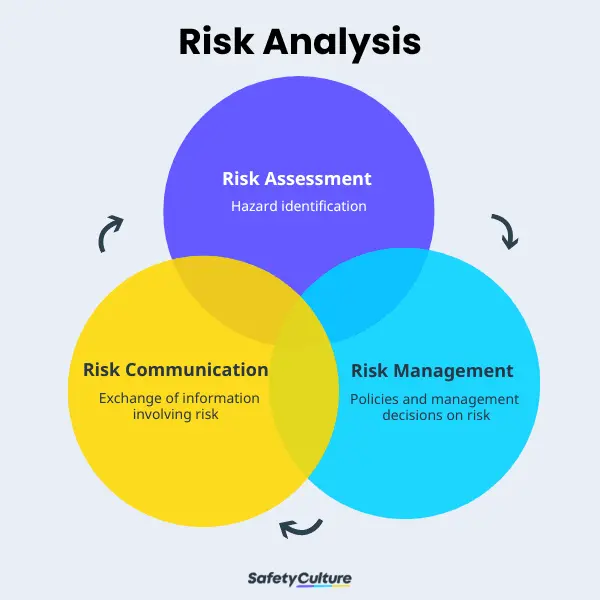How the Importance of Risk Management Facilitates Successful Project Outcomes
How the Importance of Risk Management Facilitates Successful Project Outcomes
Blog Article
Exploring the Importance of Risk Management for Effective Decision-Making Methods
In the intricate globe of company, Risk Management arises as an essential consider the decision-making process. The capability to identify possible risks and opportunities, and plan as necessary, can lead to the difference between success and failure. With devices such as SWOT and PESTEL, companies are geared up to make educated choices, fostering durability and flexibility in an ever-changing environment. Wondering exactly how this works? Allow's unload the dynamics additionally.
Understanding the Principle of Risk Management
Risk Management, an important element in decision-making, is often misconstrued or oversimplified. Generally, it describes the identification, evaluation, and prioritization of risks to minimize, check, and regulate the probability or influence of regrettable events. It's not merely concerning stopping negative end results, yet additionally regarding identifying potential possibilities. Risk Management includes structured and regimented methods, utilizing data and informative evaluations. It needs a detailed understanding of the organization's context, purposes, and the possible dangers that could thwart them. From economic unpredictabilities, legal liabilities, tactical Management mistakes, to accidents and all-natural catastrophes, it deals with various threats. Significantly, efficient Risk Management is not stationary; it's a constant, forward-looking procedure that develops with changing situations.
The Duty of Risk Management in Decision-Making Processes
In the realm of tactical planning and service procedures, Risk Management plays an important role in decision-making procedures. Risk Management hence ends up being a vital tool in decision-making, assisting leaders to make enlightened choices based on a detailed understanding of the threats entailed. Risk Management offers as an essential element in the decision-making procedures of any kind of company.

How Risk Management Improves Strategic Preparation
In the context of calculated planning, Risk Management plays an essential function. Starting with the recognition of possible dangers, it even more prolongs to the implementation of Risk mitigation procedures. The duty of Risk Management is not static yet vibrant, as it demands consistent tracking and adjusting of techniques.
Identifying Possible Risks

Implementing Risk Mitigation
Risk reduction strategies can range from Risk evasion, Risk transfer, to risk reduction. Each technique needs to be tailored to the particular Risk, considering its prospective impact and the company's Risk resistance. Effective Risk mitigation calls for a deep understanding of the Risk landscape and the possible effect of each Risk.
Tracking and Readjusting Methods
Though Risk reduction is a crucial action in strategic planning, continuous monitoring and adjustment of these strategies is similarly vital. It additionally supplies a possibility to evaluate the success of the Risk Management procedures, enabling modifications to be made where click site needed, additional enhancing strategic preparation. Surveillance and changing Risk Management approaches is a crucial component for improving a company's durability and strategic preparation.
Instance Researches: Effective Risk Management and Decision-Making
On the planet of company and finance, successful Risk Management and decision-making usually function as the columns of prosperous enterprises. One such entity is an international oil firm that alleviated monetary loss by hedging against fluctuating oil prices. In an additional circumstances, a tech start-up prospered by determining and accepting risky, high-reward methods in an unstable market. A global financial institution, encountered with regulative uncertainties, successfully navigated the circumstance via aggressive Risk assessment and vibrant decision-making. These cases highlight the worth of astute Risk Management in decision-making processes. It is not the lack of Risk, yet the Management of it, that frequently distinguishes successful business from unsuccessful ones. These situations underscore the critical duty of Risk Management in tactical decision-making. importance of risk management.
Tools and Strategies for Effective Risk Management
Navigating the complex maze of Risk Management requires the ideal collection of tools and strategies. These devices, such as Risk registers and warm maps, help in identifying and examining prospective dangers. Methods include both quantitative approaches, like level of sensitivity evaluation, and qualitative methods, such as SWOT analysis. These aid in prioritizing dangers based on their prospective influence and possibility. Risk response strategies, a key component of Risk Management, entail accepting, staying clear of, transferring, or mitigating risks. Surveillance and controlling threats, with regular audits and evaluations, make sure that the techniques remain effective. With these strategies and devices, decision-makers can browse the complex landscape of Risk Management, consequently helping with notified and effective decision-making.
Future Patterns in Risk Management and Decision-Making Methods
As we discover the substantial landscape of Risk Management, it ends up being evident that the methods and devices utilized today will certainly proceed to advance. Future fads direct in the direction of an enhanced reliance on modern technology, with synthetic intelligence and artificial intelligence playing considerable duties. These modern technologies will enable organizations to predict possible threats visite site with better accuracy and make more enlightened decisions. Furthermore, there will be a growing emphasis on strength, not just in Get the facts taking care of risks but also in jumping back from adverse circumstances. Last but not least, the principle of Risk culture, where every member of an organization realizes and involved in Risk Management, will acquire more importance. These fads proclaim a more comprehensive and aggressive approach towards Risk Management and decision-making.
Conclusion

Risk Management thus becomes a vital device in decision-making, aiding leaders to make educated options based on a comprehensive understanding of the risks involved. Risk mitigation techniques can range from Risk avoidance, Risk transfer, to take the chance of reduction (importance of risk management). Effective Risk mitigation calls for a deep understanding of the Risk landscape and the possible influence of each Risk. Risk action techniques, a key part of Risk Management, include accepting, staying clear of, moving, or mitigating threats. The idea of Risk society, where every member of a company is conscious and involved in Risk Management, will certainly acquire extra prestige
Report this page